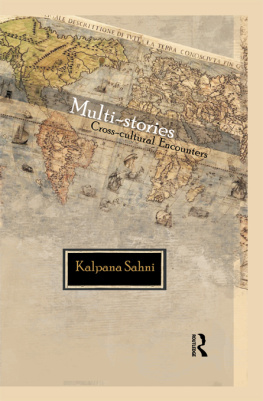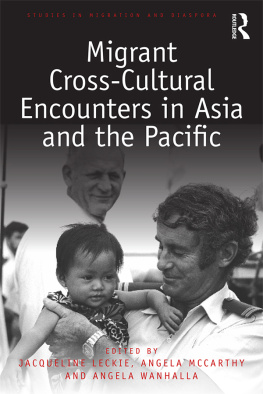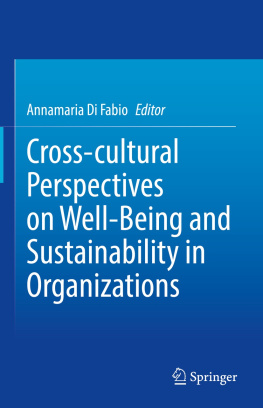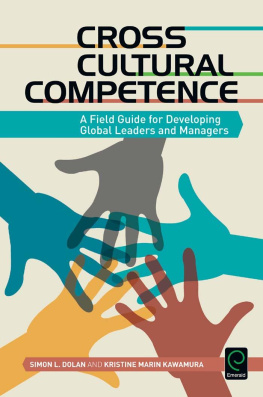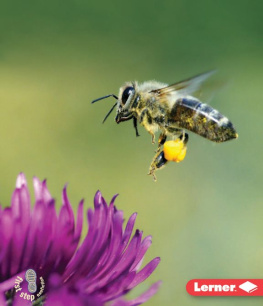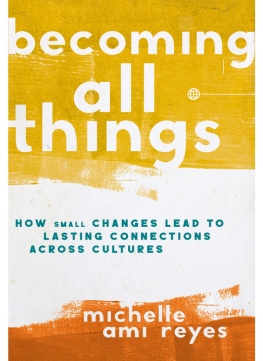First published 2010
by Routledge
912 Tolstoy House, 1517 Tolstoy Marg, New Delhi 110 001
Simultaneously published in the UK
by Routledge
2 Park Square, Milton Park, Abingdon, OX14 4RN
Routledge is an imprint of the Taylor & Francis Group, an informa business
2010 Kalpana Sahni
Typeset by
Star Compugraphics Private Limited
D156, Second Floor
Sector 7, Noida 201 301
Printed and bound in India by
Sanat Printers
312, EPIP, Kundli
Sonepat, Haryana 131 028
All rights reserved. No part of this book may be reproduced or utilised in any form or by any electronic, mechanical or other means, now known or hereafter invented, including photocopyitng and recording, or in any information storage and retrieval system without permission in writing from the publishers.
British Library Cataloguing-in-Publication Data
A catalogue record of this book is available from the British Library
ISBN: 978-0-415-58564-4
Acknowledgements
The following holders of copyright are owed thanks for their assistance and permission to reproduce visual material:
1. The Black Virgin in a Cathedral in Frauenchiemsee,
Germany. Reinhard Weidl
2. The Black Virgin in the Theatine Church in Munich,
Germany. Stephanie Faber
3. The J. Paul Getty Museum, Los Angeles
Artist: Illuminator: Unknown
Title: Josaphat Meeting a Blind Man and a Beggar
Date: 1469
Medium: Ink, colored washes, and tempera colors on paper
Size: Leaf: 28.6 20.3 cm (11 8 in)
4. The Coronation Mantle of King Roger II of Sicily.
Kunsthistorisches Museum, Vienna
5. Gentile da Fabriano. Adoration of the Magi. Uffizi Gallery,
Florence, Ufficio Permessi Polo Museale Florentino
6. Coin of the Roman Emperor Philip the Arab. Thibaut
Marchal
7. Armenian Altar Curtain in the Church of St. James,
Jerusalem. Dickran Kouymjian
8. Bayan Tuyakbaeva in Yasawi. Romi Khosla
9. Havana Marking with Raffi, the finalist of Afghan Idol.
Havana Marking
Introduction

A camel in the old part of Jerusalem is dressed up for tourists with woven textile bands of a Kullu shawl design. Nearby, the proud possessions of the Armenian Church of St James are the block-printed cotton altar curtains from Madras, dating to the 18th century, with one depicting the plants of Tamilnadu with local names in the Armenian script. In Georgias State Museum, the Virgin Mary sits cross-legged on a lotus, while in Penjikent, Tajikistan, Shiva and Parvati in high boots sit astride a bull. In the Swiss flag, the white cross on a red background is associated with the martyr St Maurice, a 4th century black African from North Egypt, while the coronation mantle, worn by 48 Roman Emperors and Kings, was adorned with Arabic script mentioning the date of its manufacture, 528 Hijra, and praising the king, Roger II. Punjabi folk tales have heroes from Khiva and Bokhara, even as Uzbek and Tajik tales have characters from Kashmir. Sheikh Muinuddin Chishti studied in Bokhara and Samarkand, while Kumarajiva travelled to China to set up a translation centre for Buddhist texts.
And then there are the languages which are waiting to be tapped for words that will reveal their long journeys, concealed histories, stunning revelations and quirky transformations. In North Kerala there is an Arabic Malayalam with 40 per cent Arabic words transmitted over centuries of cultural exchange, whereas in Indias northeast, Assam, 600 years of Ahom Thai rule has enriched Assamese with Thai and Chinese terms. The name of the Afghan city, Kandahar, is a derivative of Alexander. The Thai name, Chotima, is linked to the Hindi word for light (jyotirmoy), and not to little mother, and Angkor (of Angkor Wat fame) is a derivative of nagar (town in Hindi). Linguistic creativity continues to abound today. The word karma has acquired new connotations in the American idiom, including karma parking (for those lucky enough to find parking space) and karma boomerang. Closer to home, quirky Francofied names are in vogue, such as the banner on a smart tourist bus on a Delhi street: Le Travels to India, and Le Grand Dhaaba, an eatery, on the highway. Meanwhile in Russian, a new English word, chat, has entered from the Internet and acquired a Russian declension: I chatuyu, You chatuesh, He/she chatuet, etc.
We continue to live in a fascinating world of cross-cultural interweaves. These myriads of interconnections stretching back in time engulf our daily lives, yet often we are either unaware of them or overlook them due to our conditioning and ingrained notions. This was the case with me growing up in two countries, India and the erstwhile USSR. While the exposure did indeed widen my cultural horizons, I also imbibed and internalized many standard sacrosanct European cultural models from both Indian and Soviet schools and university textbooks. They had played a significant role in the way I perceived the world around me, including the neighbouring cultures with whom India shared a long history. Yet I was fortunate. Over time, my extensive travels, teaching and research work brought me to experience the most diverse cultures. I followed the trails of the many cultural criss-crossings through space and time, discovering their hidden interlinks and synergies. Many entrenched assumptions were turned upside down and this prompted a reappraisal of what had been imbibed and what ignored. The richness of diverse worlds and the cross-cultural reciprocity provided me with an alternative framework of reference. It enabled me to revise and de-centre my perceptions, but importantly, to rejoice in these discoveries all of which I want to share in this book.
This work, then, explores the overlapping and intermingling of cultures as well as the immense cultural diversity across countries and continents. This exploration inevitably questions any notions of higher or lower cultures, and civilized or uncivilized peoples. Indeed it questions the very concept of superiority amongst peoples. Each community, no matter where it is located on the globe, is unique and the differences are reflected in the multiple layers of culture, but no layer is more authentic than any other. Facets of culture, like travelling metaphors, are transformed and can acquire another meaning as they adapt to different cultures and locations. Perceptions of another culture are often through ones own cultural yardsticks and conditioning. Conversely, a dialogue between two cultures prompts us to examine our own cultural practices, many of which we take for granted. In other words, when people from another culture put questions to our culture, we begin reflecting on ours.
Apart from narrating cross-cultural encounters, this book also discusses how various democratic and non-democratic governments and organizations have attempted to conceal cross-cultural influences by inventing superiority, purity, and authenticity of cultures and civilizations to the detriment of others. Yet cross-culture pollination, an ongoing process, always reveals itself through the ignored cracks of history.
Open interaction and the constant cross-flow of peoples, ideas, objects, language, music, food and much else has always existed between all cultures. This has been catalystic, and notions of exclusiveness, authenticity and roots are questionable, to say the least.

